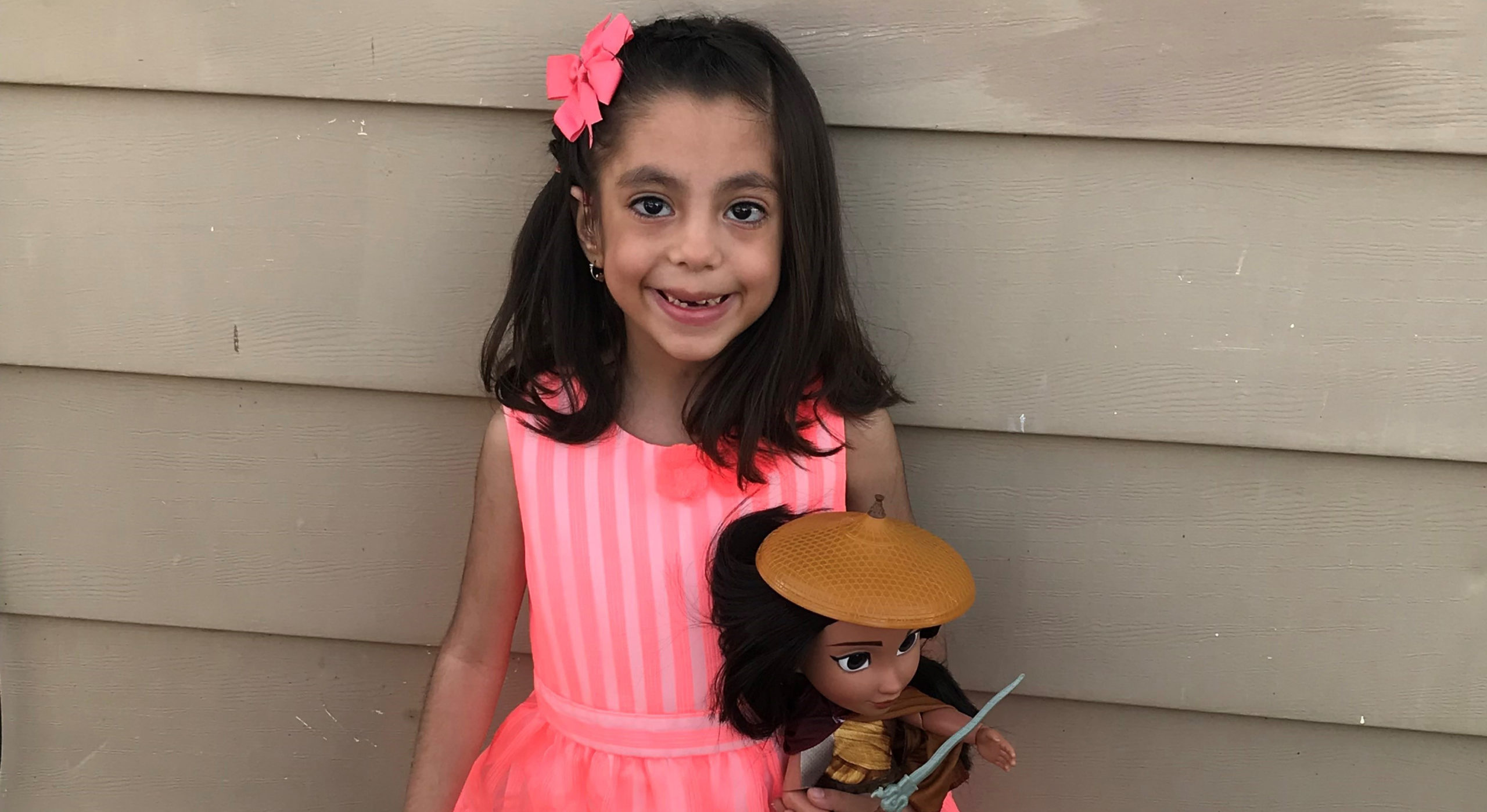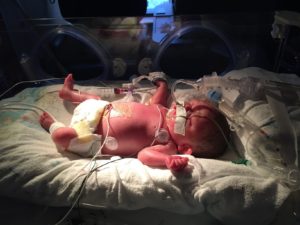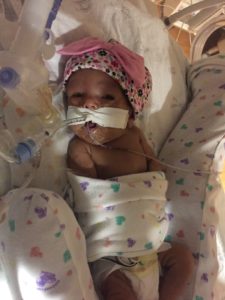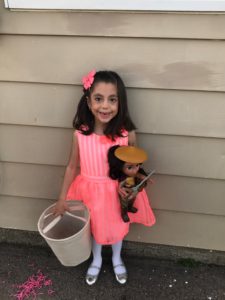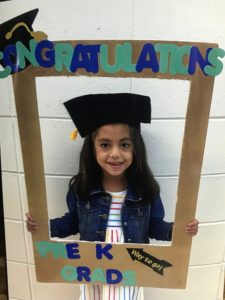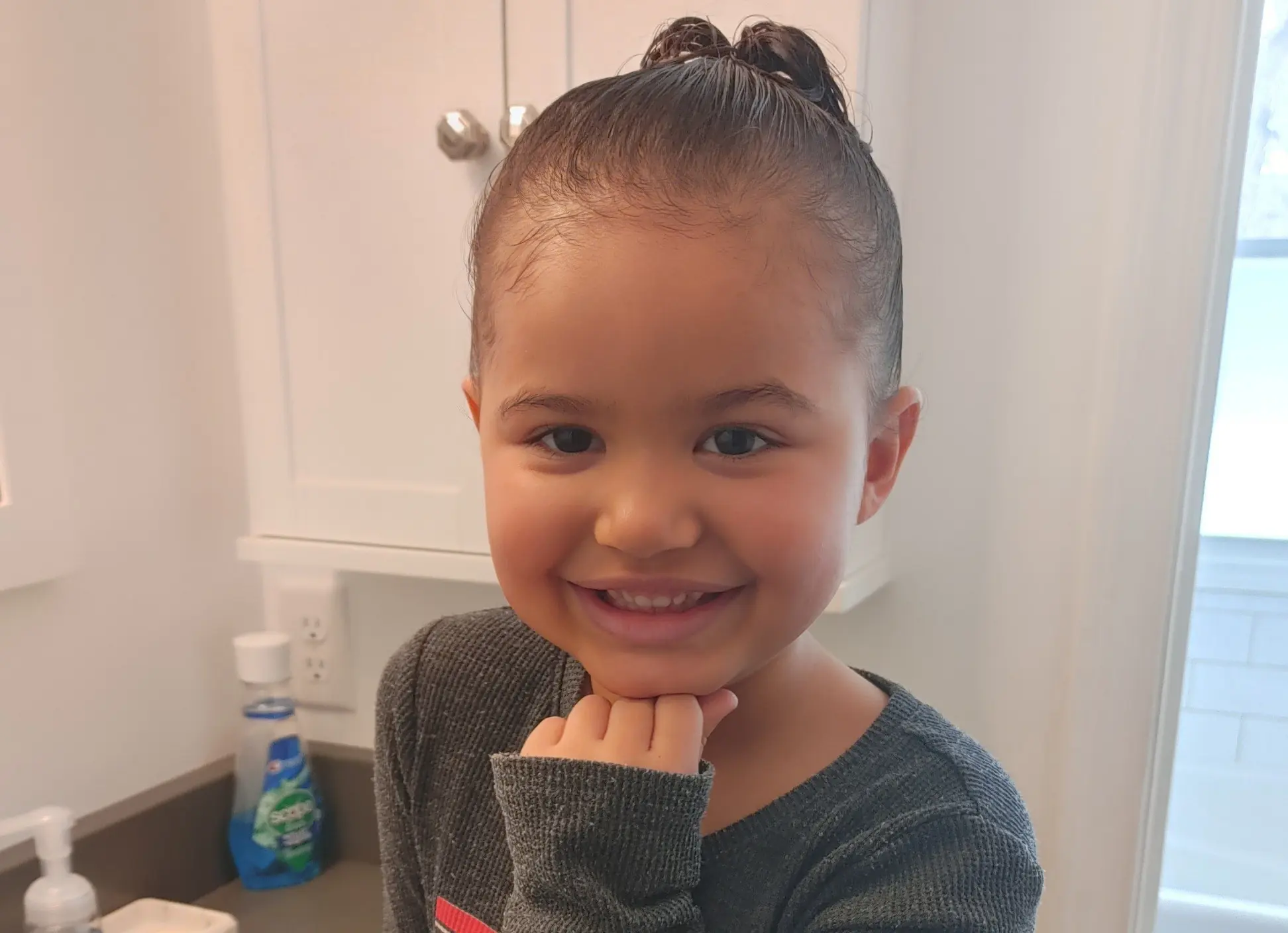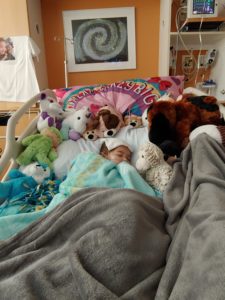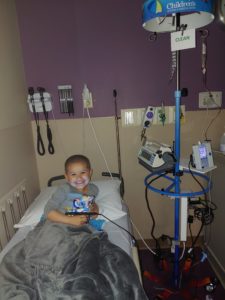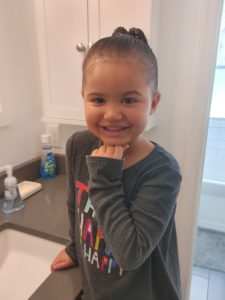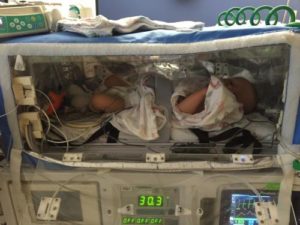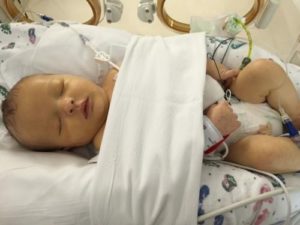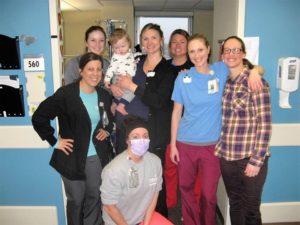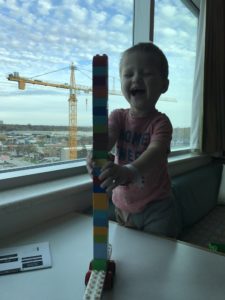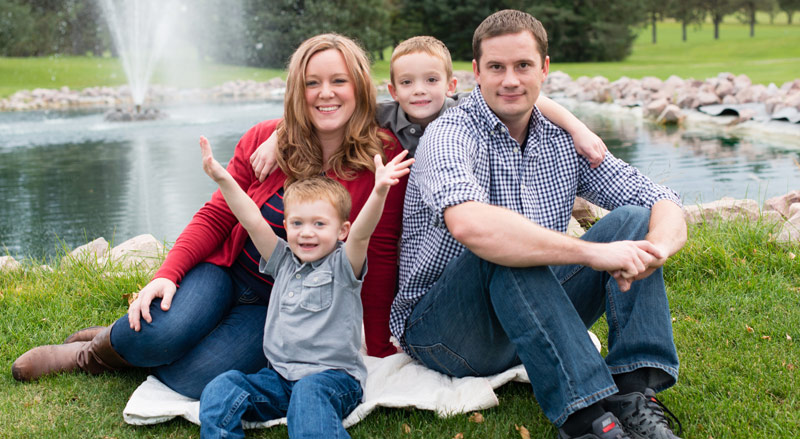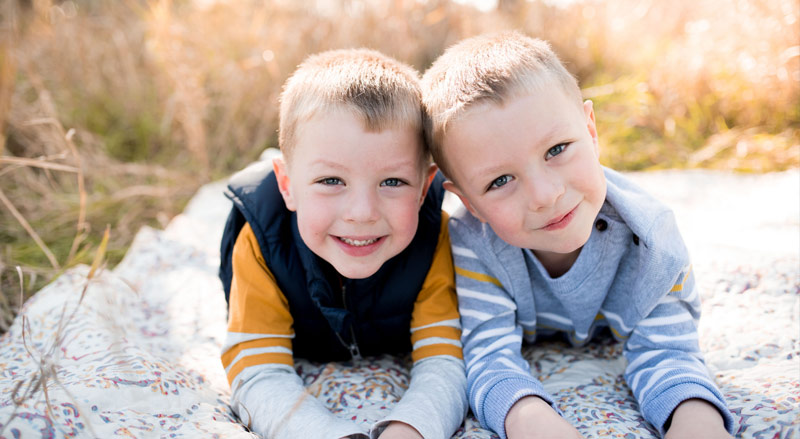Victoria’s Story: Heart transplant gives family fresh hope
Because of her small size, doctors did not want to do surgery right away. Instead, they waited and put her on medications to control the condition. As a result of her heart issue, Victoria also developed hearing neuropathy or hearing loss, because of all the fluid she had accumulated.
After spending four months Children’s Neonatal Intensive Care Unit, Victoria was finally able to go home.
“She was discharged with a feeding tube down her nose because she still needed to gain more weight. She was on a ton of medications to treat the cardiomyopathy, and was really tiny,” says her father, Martin. “She was still wearing baby doll clothes, not even preemie sizes.”
Overall, she did OK at home but was susceptible to every cold or virus in the air. For several years, though, Victoria stayed the course, and doctors continued to treat her condition with medication.
However, eventually, the drug stopped working. Victoria’s parents were told the only way their only child would survive would be to receive a heart transplant.
“We really thought Victoria would go on to have surgery but not need a transplant,” says Martin. “The idea didn’t even cross our minds, and it was terrifying.”
So, at 3 years old, Victoria was put on the heart transplant waiting list at Children’s Nebraska in Omaha.
At this point, Victoria was not doing well. She was tiring quickly and constantly sick. Doctors also didn’t want her to lose any more weight, so Victoria was admitted and waited for her new heart in the hospital. During this time, Martin and his wife were grateful for the expert pediatric team caring for their daughter, particularly the Child Life specialists who would distract her with games and other fun activities.
Eventually, though, Victoria got extremely sick – so sick she was put on a ventilator and developed blood clots. After a month, she was taken off the ventilator, but her overall condition had not improved.
“There are no words to describe how hard it is to watch your child get sicker and sicker,” says Martin.
Three weeks later, at 2 a.m., Martin and his wife received the news they were waiting for: a new heart was on its way for Victoria.
“It was the middle of the night, and when I answered, I heard them say, ‘We have a donor. Get over here as fast as you can,” remembers Martin. “When I arrived at the hospital, they were already there waiting, and they told us that they had a match. They were waiting for the heart to arrive so they could take her down and start the process.”
Before the surgery, Martin and his wife experienced a myriad of emotions.
“We were nervous, scared and happy all at the same time. But we were also sad because we knew for Victoria to receive her heart, another child had to pass away,” says Martin.
While Victoria was in surgery, her parents received updates as they waited. After about nine hours, they received the news that Victoria’s transplant was successful and that everything looked good.
“When we saw her, it was shocking because her whole chest was open,” says Martin. “Seeing her with all the tubes and wires was unsettling, but she was there and doing well.”
The following 72 hours were critical. Victoria made it through with flying colors.
In total, she spent four and a half months in the hospital, and, amazingly, had no complications.
Today Victoria is 5 years old. This past May 3, she celebrated the second anniversary of her heart transplant and has been doing great since. All her numbers look good, and she’s experienced no rejection.
To date, Victoria and her parents have not met the family of her donor – a little boy who loved Spider-Man and always wanted to be a superhero.
“In our eyes, he is a superhero,” says Martin. “He was saving lives, and that is pretty cool.”
The families have exchanged letters and pictures, but the donor family is not quite ready to meet.
“On her second anniversary, we went to Build-A-Bear. We built a stuffed Spider-Man and inside it, we tucked a recording of Victoria’s heart,” says Martin.
The donor mother wrote back that she loved and cherished this special gift.
Victoria’s parents are incredibly grateful to the staff at Children’s Nebraska for taking care of their only daughter.
“It’s a great place—the staff, the nurses, the doctors. I mean, we’re so grateful for them, for all they do. They go above and beyond to help you. We’re particularly thankful for cardiologists Dr. Ballweg and Dr. Spicer and heart surgeon Dr. Ibrahimiye,” says Martin.
This fall, Children’s Nebraska will help even more patients like Victoria with the opening of its new Hubbard Center for Children.
This state-of-the-art facility will offer a wide array of new and improved features, including a 32-room Cardiac Care Unit, a solarium and an outdoor viewing garden for patients and parents to relax. From minor murmurs to major defects, disorders and diseases, Children’s offers comprehensive cardiac care programs for both children and adults with congenital heart issues and provides care for patients of all ages, from before birth through young adulthood.
“We are really excited to hear about the opening of the Hubbard Center. They will be able to help many more families like they did ours,” says Martin. “This type of cardiac care is so needed in our region, and I am glad they are investing in it.”
As for Victoria, she’s about to start kindergarten and loves watching the movie Dolphin Tale.
“She has seen that movie more than 100 times so far,” said Martin. “The actual dolphin from the movie named Winter lives in Clearwater, Florida, and we are going to take Victoria to meet Winter at the end of July. She is so excited and asks us several times a day if it is time to leave to meet her. We’re grateful to Children’s for giving us this opportunity to spend these special moments with her.”
